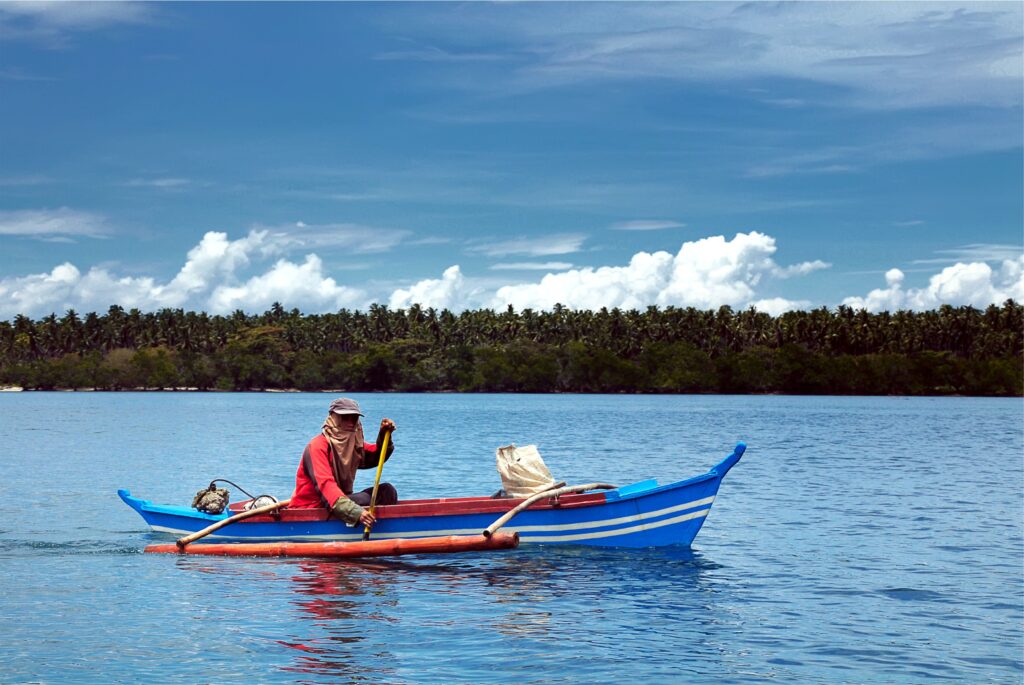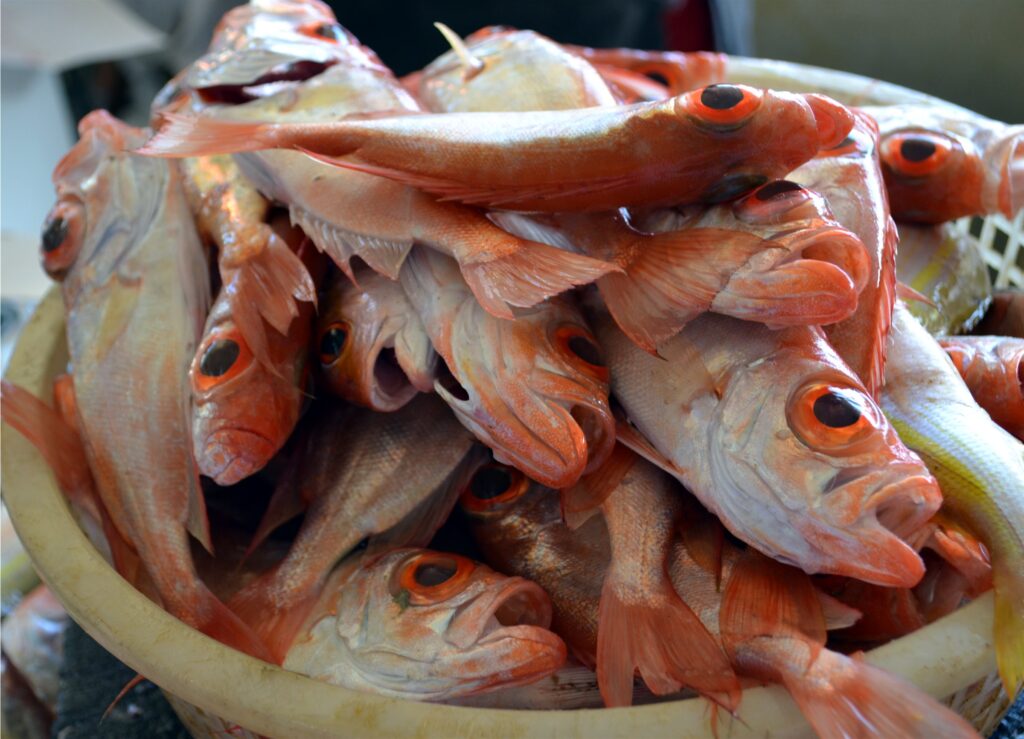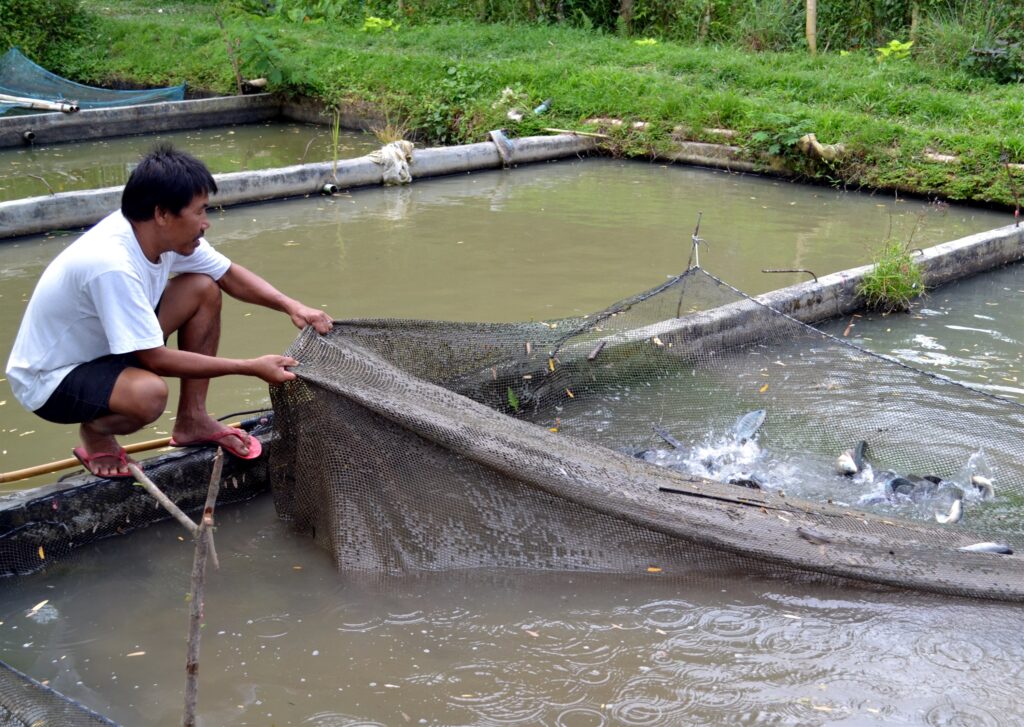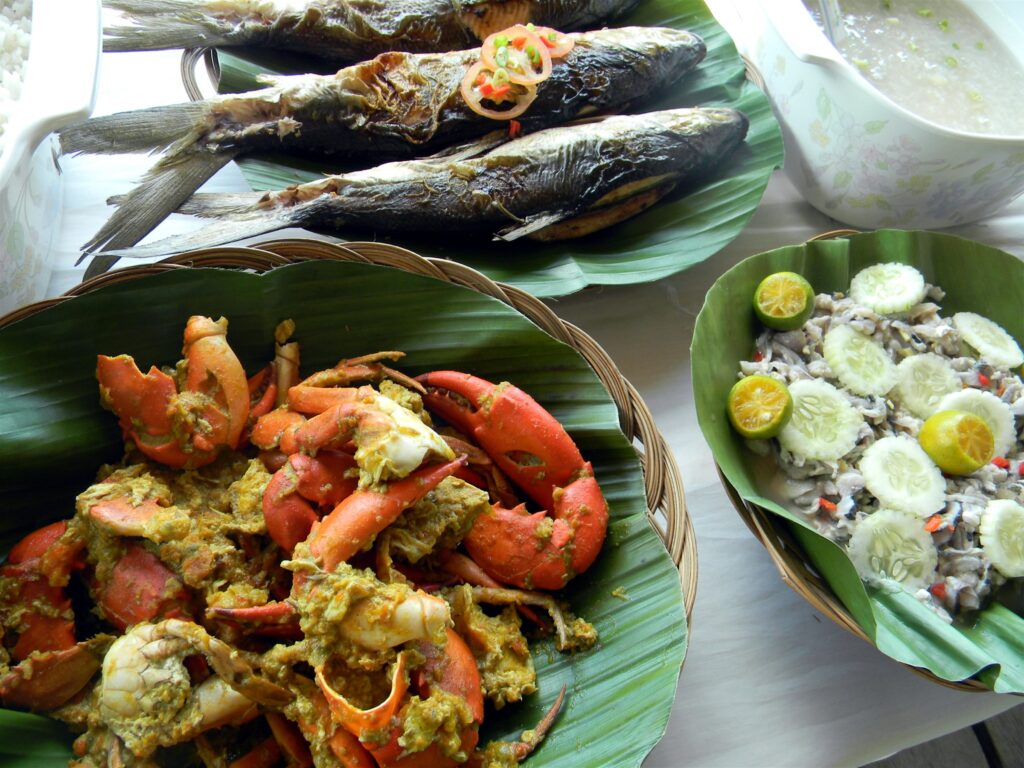Text and Photos by Henrylito D. Tacio
Fish is a staple food of Filipinos – after rice. Fish provides more than half of the protein requirement of almost all Filipinos. But in recent years, the average annual consumption has declined from 37 kilos to just 30 kilos.
“Unless we look for other sources of protein, the food intake of Filipinos will be greatly affected,” said the Bureau of Fisheries and Aquatic Resources (BFAR), a line agency of the Department of Agriculture.
“We are running out of fish and running out of time. For a country known for marine biodiversity, there are very few fish left to catch,” deplored Vince Cinches, Oceans Campaigner for Greenpeace Southeast Asia.
“Like the other vital resources such as forests, Philippine fisheries are about to collapse,” deplored Jethro P. Adang, the director of Mindanao Baptist Rural Life Center (MBRLC), a non-government organization based in Davao del Sur.
The collapse of major fishing grounds in the country would mean uprooting 38,000 fishermen each year. “The fish is getting scarcer,” said a father of six. “We all have children, grandchildren. We have to think of the future!”
A few years back, a study was conducted at the Davao Gulf, which has a total area of 308,000 hectares. The WWF considers Davao Gulf as one of the most diverse marine ecosystems in the world.
The decade-study – a collaborative effort of the Bureau of Fisheries and Aquatic Resources (BFAR), local government units, and the regional office of the Department of Science and Technology – looked at the volume and quality of the harvests of 10 commonly fished species in the gulf: matambaka, tamban, moro-moro, caraballas, bilong-bilong, lapu-lapu, danggit, molmol, talakitok, and maya-maya.
Except for maya-maya, the harvest numbers for the species have been falling. At the current rate of decline, the caraballas, bilong-bilong, molmol, and danggit may all disappear completely from Davao Gulf within a decade, the study said.
The matambaka, tamban, and moro-moro are more resilient, but even they may disappear within a generation, it added.
One reason why the country’s fish supply from the open seas is already dwindling is because of climate change. In 2015, a study released by the World Wide Fund for Nature considered climate change as “one of the main reasons for the decline of marine species in the last 30 years.”
Climate change, caused by increasing emissions of greenhouse gases, particularly carbon dioxide, is causing the average temperature of the Earth’s atmosphere to increase. As the air temperature rises, oceans absorb some of this heat and become warmer.
“Climate change is already having a profound effect on life in the oceans,” the US National Oceanic and Atmospheric Administration (NOAA) says. “Marine species tend to be highly mobile, and many are moving quickly toward the poles to stay cool as average ocean temperature rise.”
The three perilous consequences of climate change in the oceans are sea-level rise, coral bleaching, and ocean acidification.
According to a new study published in Nature, the world’s oceans are now rising far faster than they did in the past. The current sea-level rise rate – which started in 1990 – is 2.5 times faster than it was from 1900 to 1990.
The study found that for much of the 20th century, the sea-level rise was about 30% less than earlier research had figured. “We’re seeing a significant acceleration in the past few decades,” study lead author Carling Hay, a geophysical researcher at Harvard University, was quoted as saying.
“Climate change and its impacts, which can include bleaching, are some of the most pressing global threats to coral reef ecosystems today,” said Jennifer Koss, acting program manager for NOAA’s Coral Reef Conservation Program.
Coral bleaching takes place when corals are stressed by changes in conditions such as temperature, light, or nutrients. They expel the symbiotic algae living in their tissues, causing them to turn white or pale.
“Bleaching is not a good thing,” explained Dr. Terry Hughes, a distinguished professor at James Cook University, who convened the International Coral Reef Symposium in 2012 at Cairns, Australia. He said that as warm temperatures intensify, coral bleaching will also increase at an unprecedented level.
Ocean acidification is climate change’s evil twin. “Carbon dioxide in the atmosphere eventually finds its way to and dissolves in the oceans, causing the water to become ‘acidic’… reducing the ability of the coral reefs to deposit calcium carbonate or calcify,” explained Dr. Edgardo Gomez, the founding director of the University of the Philippines Marine Science Institute.
The acidity in the waters “can make life difficult for organisms that build shells out of calcium carbonate,” the NOAA says. “This includes not only corals and shellfish, but also tiny organisms like pteropods that form the foundation of many marine food webs.”
“One of the greatest natural treasures, (coral reefs) are habitats for rare species, including some 488 species of corals, 971 species of benthic algae, and 2,000 species of fish,” explains Dr. Miguel D. Fortes, a professor at the Marine Science Institute of the University of the Philippines. “A single reef may contain 3,000 species of corals, fish, and shellfish.”
One square kilometer of healthy coral reef can generate about US$50,000 annually from fishing and tourism. “As a whole, Philippine coral reefs contribute at least US$1.4 billion annually to the economy,” states the report, From Ridge to Reef: Sustaining Nature for Life.
Experts say a new kind of revolution is needed to catch up with the demand for fish. “New technologies, new breeds and newly domesticated species of fish offer great hope for the future,” The Economist said in a report.
That’s where “blue revolution” comes in. If you’re wondering just what is it, just remember the “green revolution” of the past. If you have forgotten, the “green revolution” refers to a set of research and development of technology transfer initiatives occurring between the 1930s and the late 1960s that increased agricultural production worldwide.
“On land, the green revolution allowed dramatic increases in crop production, with increased mechanization, and improved pest control and soil fertility through the addition of herbicides, pesticides and nitrogen-based fertilizers,” The Economist explained.
So, if the same technique can be adopted in the waters, the sobriquet “blue revolution” (refers to the color of the ocean) came into existence.
“The blue revolution has seen companies breeding fish to improve traits such as their growth rate, conversion of feed into flesh, resistance to disease, tolerance of cold and poor water, and fertility,” said The Economist.
Blue revolution actually refers to aquaculture, the farming of marine animals. Actually, it’s not a new thing. China did it first. No wonder it leads to farmed fish production and other aquatic resources.
“Aquaculture yields have increased from around two million metric tons in 1950 to almost 50 million metric tons today,” wrote Dr. Jeffrey D. Sachs, director of the Earth Institute at Columbia University in Scientific America.
Aquaculture seems to be the answer to the fish shortage in the country. But some marine experts believe that aquaculture would put further pressure on marine ecosystems by its reliance on wild stocks to supply seed.
Another ecological impact: the need for land and water. In the Philippines, lands usually converted into ponds are waterlogged areas and wetlands (marshes), cultivated rice fields, or drylands. Water supply usually comes from irrigation canals or rainfed.
In some lakes, the number of cages and other aquaculture ventures exceeded the desired number as these minimize waves and water current, eutrophication results. “When water movement is very low, supply of dissolved oxygen is affected,” the BFAR explained. “The bottom layers of the water can be devoid of dissolved oxygen while the surface layer can be saturated.”
The outcome: fish kill.
Escapes of domesticated farmed fish into rivers, lakes, and coastal areas have become a growing risk to the already decimated stock of wild fish. Yet, such escapes are not uncommon. In an article that appeared in Worldwatch in 1995, author Anne Platt McGinn noted: “In tropical freshwater systems, two-thirds of escaped fish species have become established.”
During the International Collective in Support of Fishworkers held in Cebu City more than a decade ago, the senior fishery liaison officer from the Food and Agriculture Organization (FAO) said: “Our marine resources can no longer sustain our needs.”
No one seemed to listen to her!





